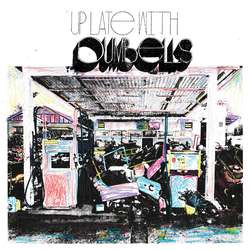Christopher Mevel, one of the founding members of the Dale Cooper Quartet & The Dictaphones, set up his solo project, Pan & Me, in order to step outside of the jazz based sound of the main band and to explore other sonic domains. Ambient music and drone are the key aspects of Pan & Me and their main focus of Melvel. Following the release of his first album, Paal, Melvel’s takes on an ever more expanding voyage in his sophomore full-length,Ocean Noise, giving more depth and detail to his sound.
Since this is ambient music, the aspect where Ocean Noise really succeeds is in creating huge atmospheric music. From the very start of the album, it hits you straight away. The grand vibe of “Yotsuya Station” swoops in and hooks you immediately to this album, with the melodic lines of the song making it a very emotional listen. But that does not mean that this album is just filled with big moments. Sure, you have other instances where the sound takes on an imposing form, as is the case with “A Bigger Grand Canyon” and especially in the more aggressive “Sun In An Empty Room.” But Melvel makes sure to offer instances where the mood changes and might become more peaceful and soothing, as is the case with “La Jetee.” But what actually is quite striking is when Pan & Me take a turn for darker sounds. That can range from the cold, unfriendly “Oberland” to the almost scary “Re-Wind.” And it is absolutely perfect when the vibe switches to more cinematic paths, with the back to back songs, “Nickel Empire” and “Fahrenheit” stealing the show.
The main tool for the construction of such diverse themes originates from the wonderful use of synths that is implemented in Ocean Noise. In the first two songs of the album, the synths seem to be exploring the background of the music, creating soundscapes. In other instances the sounds seem to be coming in like waves on a shore, especially in “La Jetee” and the magnificent “The Sea Is So Quiet.” Especially the way in which Melvel progressively enhances the sound of the fifteen minute long track is a highlight on its own. While, in a similar manner he is able to create a very rich background for “La Rose Du Bleu” displaying the extent of his practice and experimentation with synths. On the other hand, the progression that Pan & Me implement in their songs is aiding vastly in this sonic illusion. The repetitive nature of tracks such as “Yotsuya Station” is mesmerizing, while when a more minimalistic approach is implemented the results become even better. “La Jetee” showcases this approach by Melvel and it really shines also in “Oberland” with the more abstract concepts. Melvel always takes his time with the method in which these tracks expand, from the expansive “A Bigger Grand Canyon” to the more dramatic “Fahrenheit,” he makes sure that he has explored everything surrounding the song before moving to the next part.
Another strong weapon in the arsenal of Melvel in this instance is his ability to come up with great melodic lines. The opening track is a testament to that and it immediately grabs hold of the listener. But in other instances you get hypnotizing moments, as is the case with “La Rose Du Bleu,” or more subtle phrases, for instance in the background of “The Sea Is So Quite” and in “Viva.” But the more stunning moments are still his more cinematic pieces, “Nickel Empire” and “Fehrenhait.” And once you have melody you still need to balance it with its opposite, and that is where the implementation of noise comes in, lifting the songs even further. Throughout the opening song you can hear the noise acting as a constant sonic background, making the whole listen even more intriguing. Noise bursts are applied in “Oberland,” creating some abstract rhythm, and in “Parchemin.” In “Nickel Empire” it seems as if Melvel is flirting with noise, but never conceding to it, while in one of his more extreme moments he goes into a deep sonic experimentation, shaking things up in “Viva,” on top of all the effects firing together.
Melvel has been able to further evolve his music and extend his vision with Ocean Noise. This is one tremendous trip through ambient soundscapes and the diverse musical aspects of Melvel. It is better to consider it a coherent piece of work than twelve songs compiled together. And when you reach the ending of the album, in “Re-Wind” you will also find some vocals. Of course they have been filtered through the kaleidoscope of Pan & Me, so they will be quite different from what you would expect.




